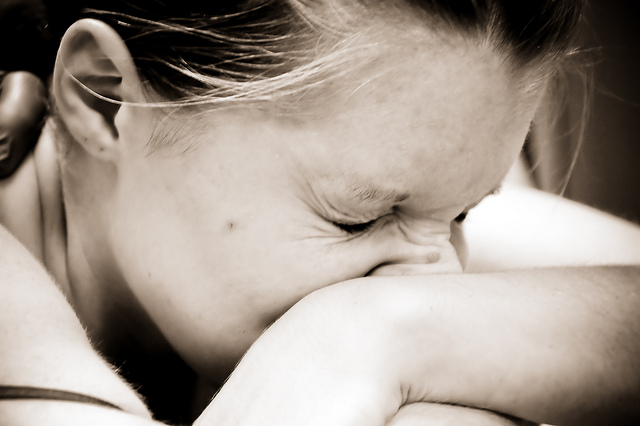Does it really make sense to run from pain and seek pleasure?
I’m asking this question because I am lying on a tennis ball being told by my yoga teacher to search for the pain in the crevices of my body.
It seems weird looking for pain, because most of the time we are taught to avoid it.
Yet this yoga class is very painful, and that’s the whole point. There’s healing to be found in the pain.
At first I notice I want to shy away from the pain when I hit a sore spot and it gets too intense, but as the class goes on I find myself enjoying the pain, going for it with a real gusto to get right into the most sensitive points.
It’s not the pain, but the release, that feels so pleasurable—like peeing when you’ve been holding on for a really long time.
I’ve been told that our bodies hold on in the myofascia (the soft tissue covering our muscles), and by applying pressure to those sore spots we let go of muscle tension and the emotions we store along with that tension.
There is something incredibly satisfying about letting the tension go—a freedom of returning our bodies back to their natural state.
It’s like doing a body reboot.
I know I have a strong tendency to hold onto painful emotions. I remember as a child and teenager consciously stuffing them down into my abdomen whenever sadness or hurt came up. I was sensitive, but my peers told me it was not okay to express emotions too strongly.
I was conditioned, like everyone else, to think that the worst thing possible was to show negative emotions in front of other people. A happy face was the only acceptable thing to display and I didn’t want anyone to know I was hurt or afraid, so I decided it was best to fake it. Life felt easier this way and other people seemed more comfortable when my emotions were on mute.
But in every weakness there is a strength.
I’ve achieved the most rapid personal growth when I’ve dived straight into my pain. It’s been scary but incredibly transformative. I’ve stopped distracting myself when pain comes up, and now I choose to look it straight in the face in order to release myself from its debilitating grip.
I used to judge anger as bad, fear as weak and sadness as pathetic. I’d bought into the story that negative emotion should be pushed aside in favour of a positive outlook and denial of all things “unpleasant.”
This might seem like a good strategy on the surface, but the big problem was that these emotions did not disappear. They were still there inside my body, waiting for an opportunity to jump out and take me over. Other people could sense they were there, too.
The sadness and fear was written in my eyes, my face and my body posture.
Despite how much I have tried to fake feeling good all the time, all I did was manage to squash away these experiences deep inside me. The rejection of the child who was picked last, the sadness of the teenager losing a best friend, the grief of an adult losing a partner—all these things were still being projected out from inside of me.
We think by staying positive we’re putting our negative emotions out of sight in the safe realms of our private inner world, but we’re not. They are very much on public display and everyone else can feel them even if they might not be able to name what it is they sense.
The other problem in stuffing down negative emotions is that we shut off the positive ones.
I don’t remember feeling a lot of happy feelings during my early life and I think this is why. We can’t choose to feel only good emotions. What I’ve discovered is that through allowing myself to be open to the bad ones, I have also allowed a flood of very positive ones back into my life.
Joy, bliss and love come coursing through me regularly now that the channels of feeling have been opened once again.
When we are willing to face what we most fear about our negative emotions, we realize that they will not overwhelm or kill us, despite the fact that we sometimes feel they will. These feelings often just want acknowledgement and then they can be quickly and easily released. If we don’t do this we either carry them deep inside like a badge of negativity or risk projecting them inappropriately onto others.
We need to re-think our personal and collective way of understanding pain and its role in our lives. It doesn’t have to be some scary thing we run away from.
Maybe there is a different way of looking at fear when it arises.
What if our pain provided the keys to our own transformation?
If only we were willing to look. Ouch.
Love elephant and want to go steady?
Sign up for our (curated) daily and weekly newsletters!
Editor: Emily Bartran
Photo: Britt-knee/Flickr












Read 0 comments and reply